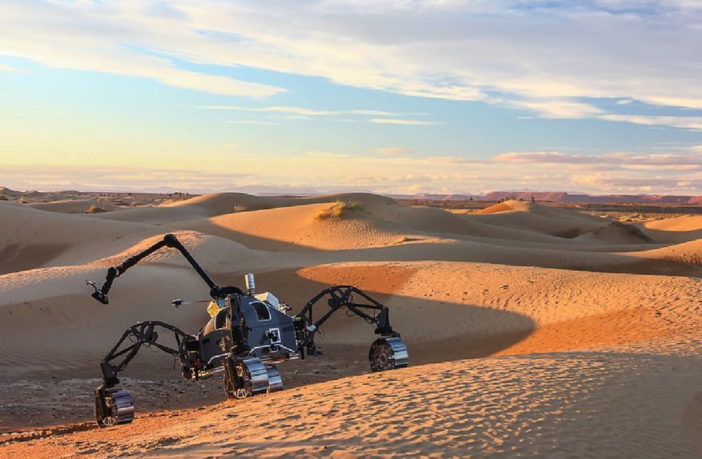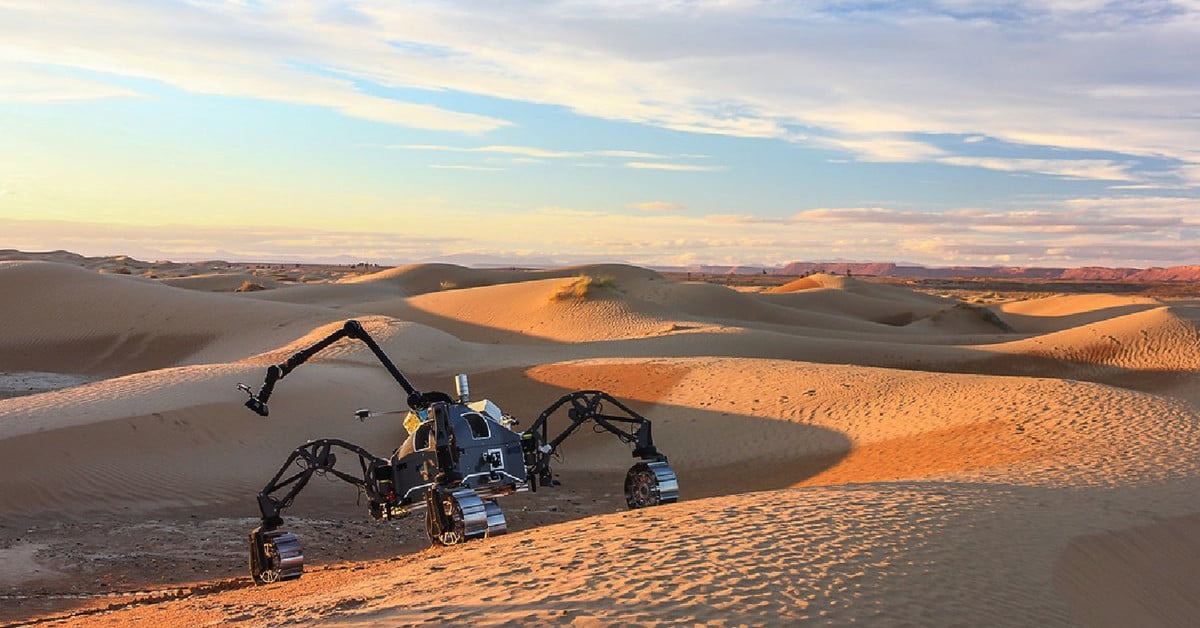Cbr online
Conor Reynolds
“Mars is a very difficult planet to land safely on, so it’s essential to maximise the discoveries from each successful touchdown.”
A multinational team led by the UK Space Agency has wrapped up testing of an autonomous Mars rover set to land on the planet in March 2020.
Month-long tests in the Sahara throughout December trialled UK-developed software intended to give the Mars rover significantly greater autonomy.
With the transmission of commands to Mars taking eight minutes, hand-guided robots encounter a huge latency problem, restricting their explorations, the UK Space Agency said in a release on Wednesday.
Catherine Mealing-Jones, Director of Growth at the UK Space Agency, said: “Mars is a very difficult planet to land safely on, so it’s essential to maximise the discoveries from each successful touchdown. New autonomous robot technology like this will help to further unlock Mars’ mysteries…”
Mars Rover: Tested in Morocco
Morocco’s Ibn Battuta was selected as a test centre for its similarity to the rocky Martian terrain rovers have to navigate, with a rover dubbed “Sherpa” provided by the German Robotics Innovation Centre DFKI. This underpinned tests by a pan-European team of a variety of technologies, including data fusion systems, a plug-and-play sensor suite and an open source operating system for robotic control.
Companies and universities from around the UK including Airbus Defence & Space, Thales Alenia Space, Scisys, King’s College London, the University of Strathclyde, and GMV-UK all participated in the software testing.
ERGO: 1.4 Kilometres
A key piece of software used by the rover is the European Robotic Goal-Oriented Autonomous Controller or ERGO. The system was developed by a consortium of colleges and enterprise, with Airbus and GMV leading the research.
ERGO enabled the rover to autonomously travel 1.4 kilometres with the goal of taking a soil sample in a remote location. Traveling through the Moroccan terrain the rover encountered steep gorges and slopes alongside the wide plains of the Sahara desert.
With the ERGO autonomous software the rover successfully navigate the terrain adapting to unforeseen obstacles and situations using its equipped camera and image recognition system.
As part of its autonomous programming the Sherpa will observe the surrounding terrain and mark unknown features for analysis and characterisation, allowing it to identify research items that have been missed by human eyes.
Sherpa has the ability to alter its initial path, pre-planned by human controllers, in order to investigate terrain that it has deemed interesting.
Also tested in Morocco was the I3DS Plug and Play Sensor Suite, essentially this is an array of sensors, experiments and illumination devices that can be interchanged depending on the mission requirements. The I3DS suite system acts as interchangeable building blocks that can operate in conjunction with each other.
The I3DS system manages data flowing from the sensors and instruments, pre-processing it through dedicated boards that filter, compress and correct any distortions.
See Also: SpaceX Launch Carried 64 Satellites: A Landmark British Payload Among Them…
The tests were done as part of the European Horizon2020; a seven-year programme designed to foster EU research and innovation.As part of this programme the ExoMars mission aims to land a rover on the surface of Mars in 2020. The UK Space Agency has invested £262 million towards the mission.








